Welcome to the Falkland Islands! Another tender port for us today – but thankfully the last for this cruise… well, if you don’t count the Bay of Islands in New Zealand on the way home, and no one seems to be counting one that for some reason! Anyway, we were off the ship bright and early and met at the docks in Stanley, by our intrepid guides for the day. We had booked a 4WD day trip to Volunteer Point with Patrick Watts, a local tour operator, to head overland and go and see the penguins.
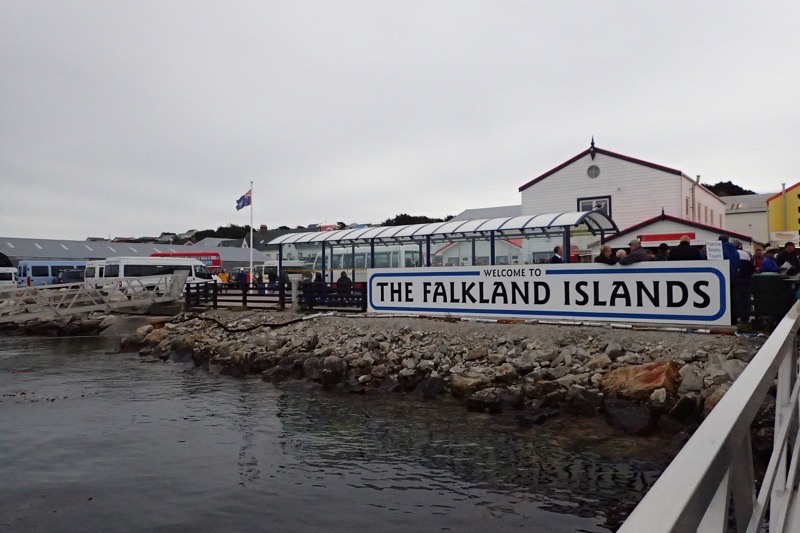
We met our driver, Toni D, and another couple of ladies from the ship, and the five of us struck out at the front of a convoy of Toyota Landcruiser 4WDs towards Volunteer Point. Bringing up the rear of our convoy was Toni’s husband, Richard, also driving was her niece Bonita, and making our lunches later would be her brother Derek and his wife, who are permanent wardens down at Volunteer Point. With a population of around 3,000 people, it’s not surprising that the tour operators are a family and friends endeavour, and it was interesting to find out that all of them have ‘real jobs’. 🙂 On the way, we gorged ourselves on the very striking, and very northern Scotland looking! – scenery. Low alpine vegetation and an impressive amount of quartzite scree in nearly every direction. A little further inland and we were greeted by peat bogs for as far as the eye could see. Once upon a time, the island was shaped by glaciers and ice, and the landscape that remains is incredibly beautiful. We drove along full of questions, and before too long were all chatting like old friends about life in the Falklands.
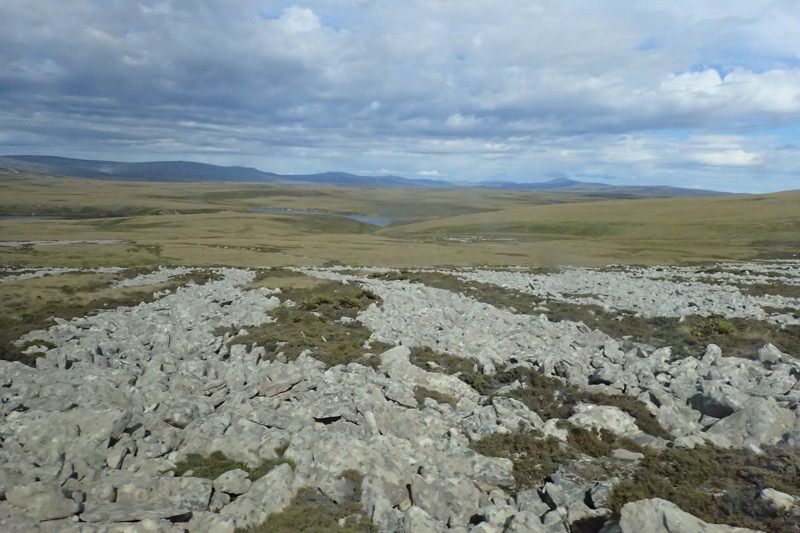
Toni (a sixth generation Kelper) and Richard (immigrated from the UK in the 70s), are sheep farmers. They have a property of some 13,000 acres that has about 6,000 sheep on it, and they’ve just had a long week of drafting and shearing, but here they are, up bright and early to show us around. Toni would be proud of me when I tell you all that they are mostly farming MPM sheep now… that’s Multi-Purpose Merino for you non-agricultural folk, and they are improving their wool quality (19 microns) since hiring in consultants to assist with their pasture management and breeding programs. See? I was listening. 🙂 They also have about 90 cattle on their property (for domestic consumption only), and people in these parts would kill for a salad or some strawberries, grapes or mangoes. Fruit and vegetables are mostly imported and therefore stupid expensive. So the local diet is basically a vegetarians’ worst nightmare. 🙂 Their kids are both living in the UK now, after having gone there to complete their tertiary studies, but they are hopeful they will return at some point, even if it is just for a few years.
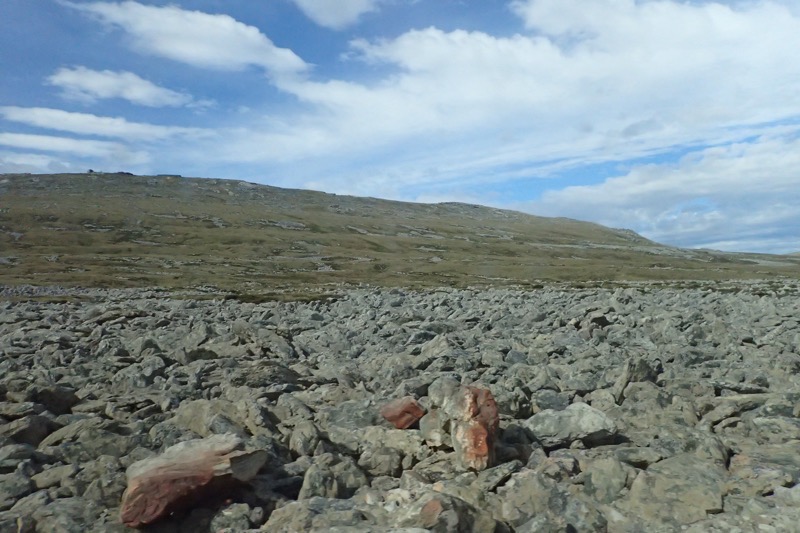
I was just a kid when the Falklands War happened, and have never been one for modern history – so my grasp of the how, when, whys of that particular war have always been a bit vague. I asked Toni D if she was ok to talk about it (didn’t want to bring up topics that might be potentially sensitive or distressing?!) , and she was only to happy to answer my stupid and probably, extremely ignorant questions. It was nice to have a local and informal take on what happened. Toni said the war happened because the military rule in Argentina was starting to face extreme opposition from the populace, and they basically decided to attempt to assert sovereignty over the Falklands to 1) free the people of the Falklands from ‘unwanted’ British colonisation and 2) restore the Argentinian people who had lived in the Falklands to the islands and reclaim their homeland… only the Kelpers (Falkland Island residents) weren’t interested in being ‘freed’, and the Argentinians who were to reclaim their ‘homeland’ were given the opportunity to stay… so, it’s not like there are a displaced people out there somewhere? No. It looks like the whole war was a misdirect so that the Argentinian population would stop looking at how horrific their government was treating the people. So yeah, cunning plan – the people are revolting, let’s give them a war to worry about instead. The engagement lasted only a few months, but there was approximately 600 Argentinians soldiers who lost their lives and over 200 British soldiers who died in the ensuing battles as well. When it was all over, the UK maintained control over the islands and the Argentinians, left having planted shit tonnes of landmines in the Falklands. There are contractors today who are still busy working to remove landmines; thankfully the Argentinians kept records of where they had planted mines, so (disturbance by weather, and the ocean, aside), they are not as hazardous to find as in some other countries. Toni did say that many of the landmines were being cleared in areas that the Falklanders had no intention of ever using, but thanks to UN landmine anti-proliferation agreements, they were forced to continue spending resources finding them and defusing them. Further to all this, the ‘Argies’ like to stir things up by flying over Falkland airspace every now and again, and they have an annoying habit of attempting to assert their claims over the Falklands in the UN and in the media whenever it suits them. A referendum was held on the matter of sovereignty not so long ago, and unsurprisingly, 99.7% of Falkland Island citizens voted to remain part of the UK.
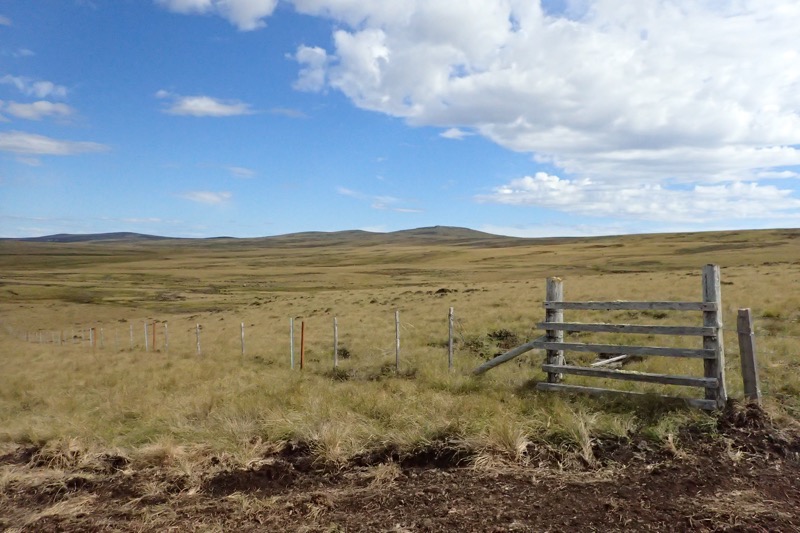
Anyway, by this time we had reached the end of the road and waited while our convoy caught up. It was time to switch into low range and head off-road over the peat bogs towards the Point. Peat bogs at home in Australia are all considered sensitive ecosystems and woe betide the hiker who ventures off the track and walks on the peat… here, we were driving through them in huge 4WDs and heading in a multitude of directions, they have so much peat, many people are still using it for fuel.
Volunteer Point is an impressive peninsula to the north east of Berkeley Sound, and to get there we had to pass through the settlement of Johnson’s Harbour, and drive south approximately 10 miles off road through a private sheep station and straight through the peat bogs. We bumped and jostled along for about an hour through some really pretty countryside, and were very grateful to be in Toni’s comfortable Landcruiser. It was not like any 4WD track I had ever been on before – the whole drive felt kinda bouncy and spongey, no doubt from a combination of squishy peat, and really good suspension!
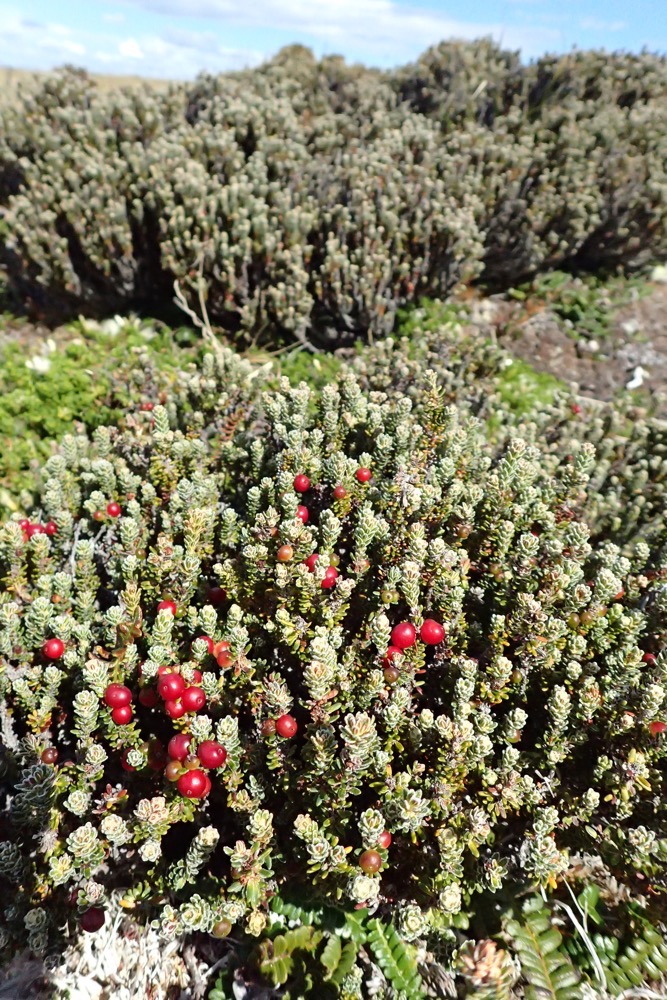
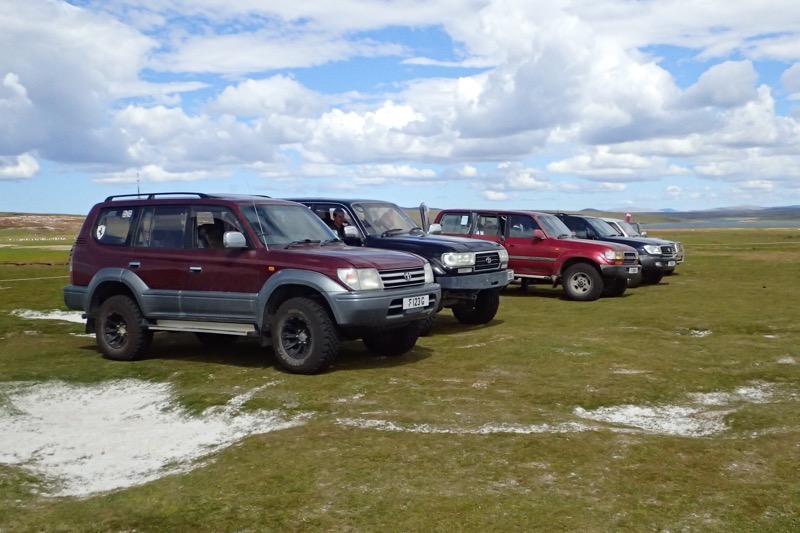 Above: Feels like the Toyota Club is in town. 🙂
Above: Feels like the Toyota Club is in town. 🙂
Below: Our amazing guide, Toni…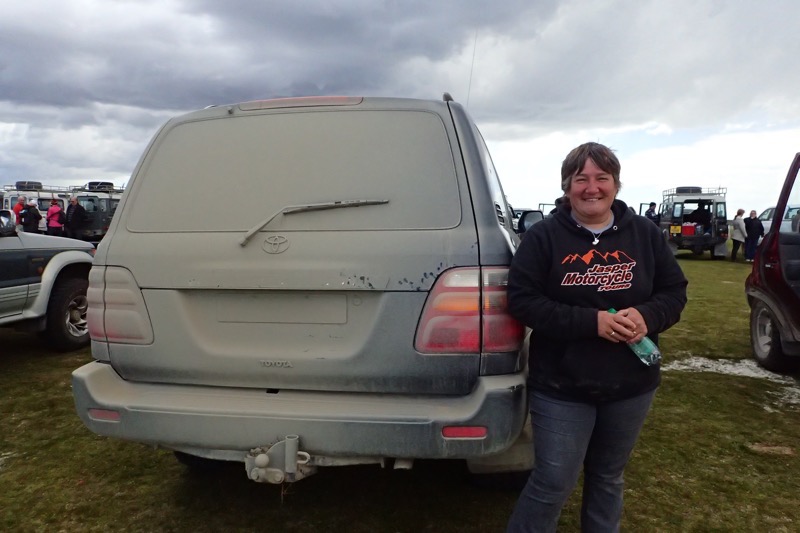
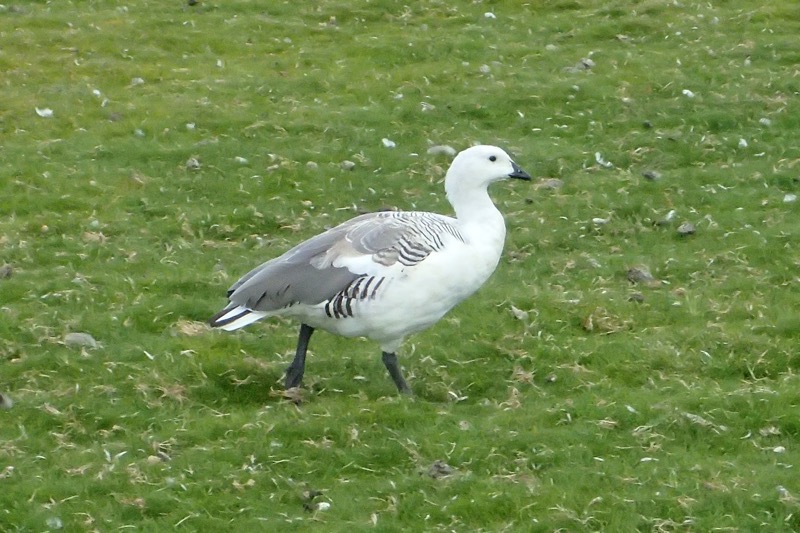
*Not a penguin in case you were wondering – this is an Upland Goose.
Eventually, we made it to Volunteer Point which has over 700 breeding pairs of resident Gentoo penguins, hundreds of pairs of Magellanic penguins, many other sea birds, such as oystercatchers, sandpipers, upland geese and of course – the main drawcard, the King penguin colony, which consists of over 500 breeding pairs. There are apparently 17 species of penguins in the world, and the King penguin is the second largest of all the penguins. The Falkland Islands boast breeding grounds for five of the 17 species, so it is an excellent place to go visiting penguins in the wild.
First ones we saw were the Gentoo penguins, which are easily recognisable by the wide white stripe that extends across the top of their heads and the white markings behind their eyes. They’re really pretty and stand about 20” tall. They hang about in groups, incubating their eggs, or in this case, due to the time in the season, we see all the adolescent Gentoo hanging about enjoying the sun and moulting off all their baby feathers. There are tiny fluffy white feathers all over the ground, blowing all over the hillside – be a bit of a nightmare if you were an allergy sufferer. The Gentoo penguins look quite playful compared to their neighbours, as they seem more laid back and more tolerant of each other’s company. Or perhaps that is just because the group we were looking at was comprised of mostly lazy teenagers busy, you know, just moulting about the place. They also didn’t seem to mind the occasional Magellanic penguin who was masquerading in their midst.
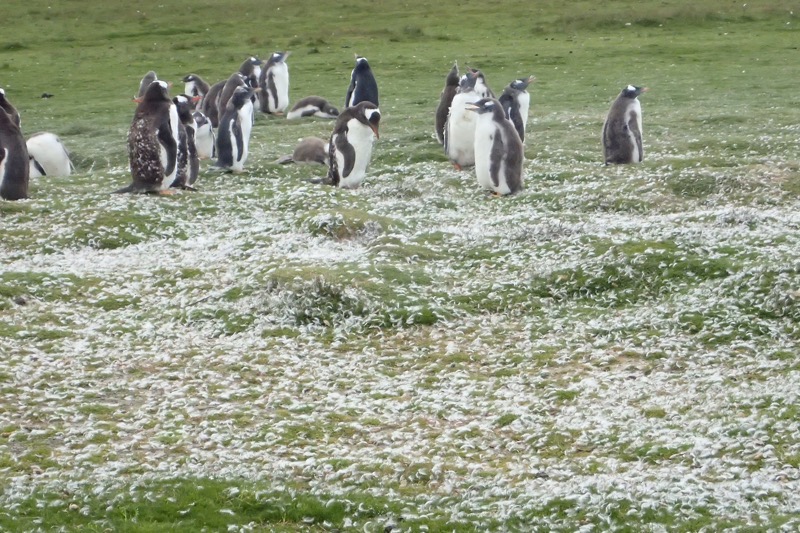
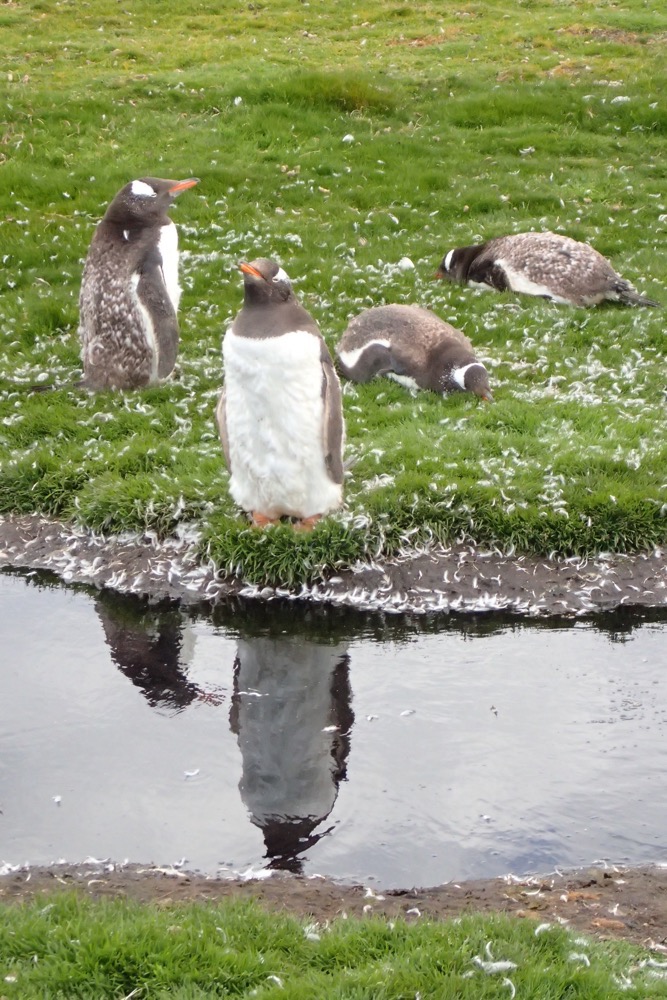
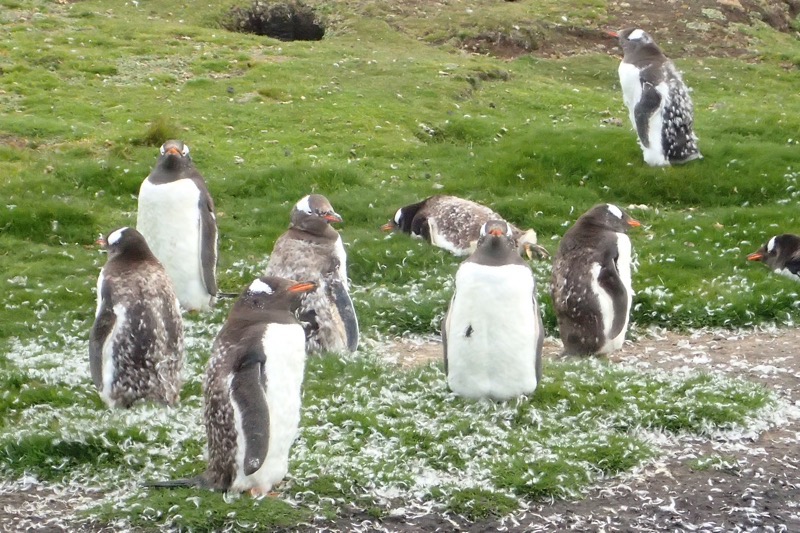 These guys stood around so still for so long, they reminded me of the moai monuments in Easter Island…
These guys stood around so still for so long, they reminded me of the moai monuments in Easter Island…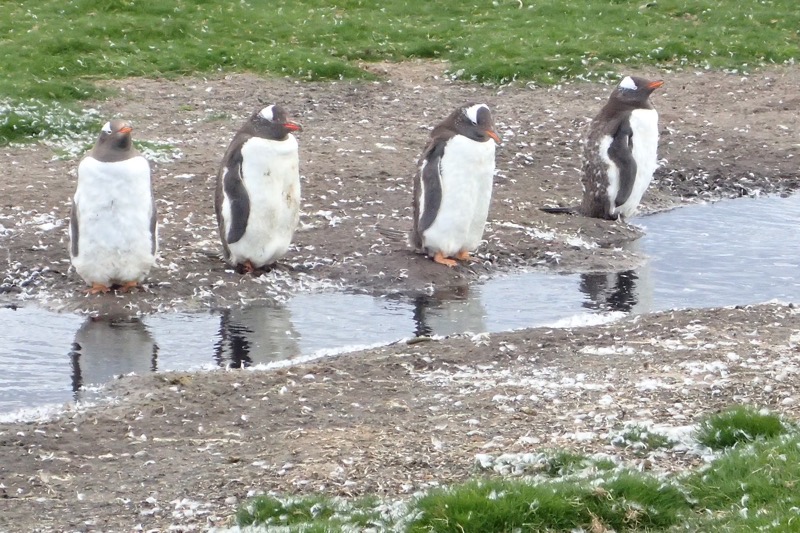
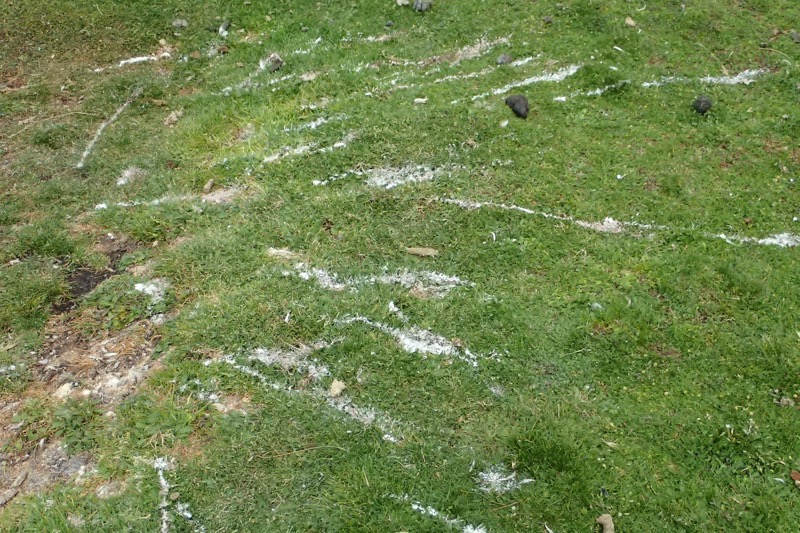
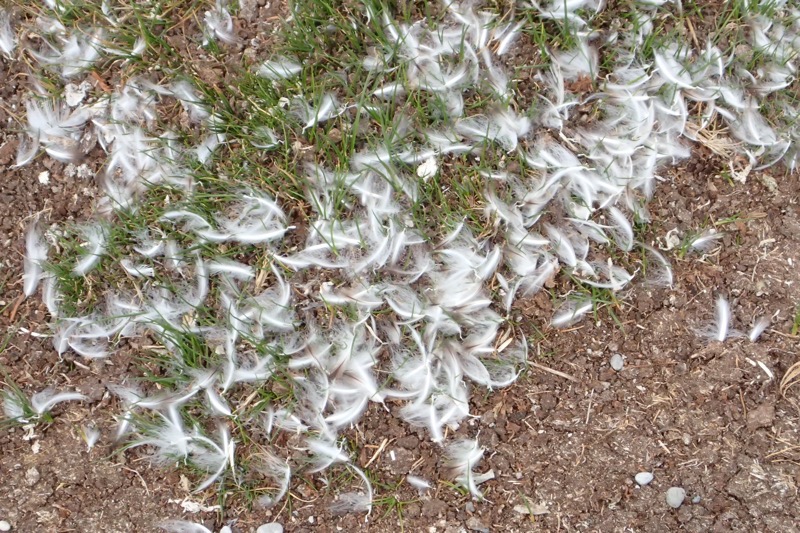
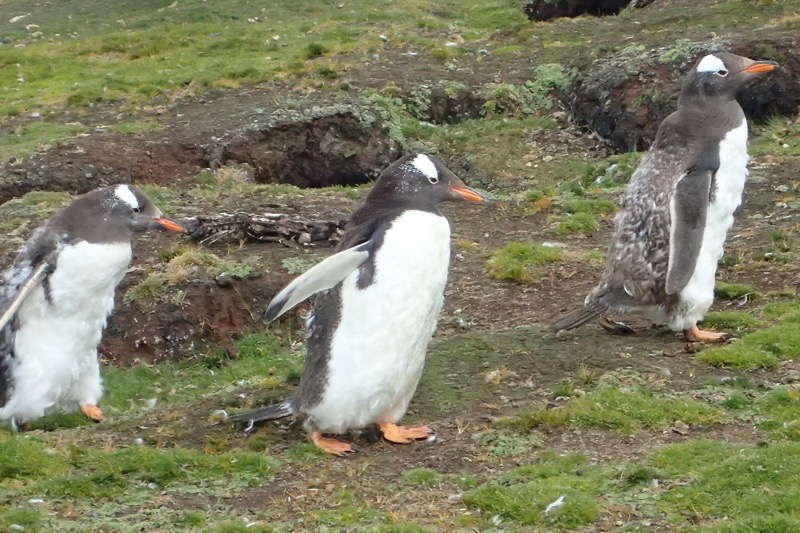
The Magellanic penguins, Sphenicus magellanicus, is probably the most widespread of the penguins around the coast of the Falkland Islands, and apparently the most vocal! They have an unmistakable donkey-like call and the locals have taken to calling them ‘jackass’ penguins for this reason.
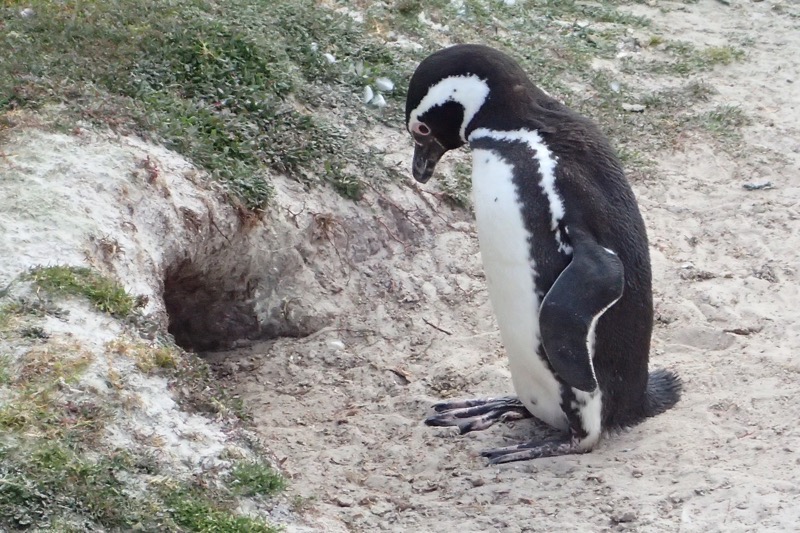 The Magellanic penguins live in burrows across the vast areas of unpopulated coastline that they inhabit and this makes this a little more difficult to see, and a lot more difficult to accurately count. Magellanic penguins are also found on various coasts in South America, but the population is under threat. There are an estimated 40,000 birds killed each year as a direct result of oil pollution. For example, in 1991, a single oil spill was estimated to have killed 15,000 Magellanic penguins in once incident. The adult birds return to the Falklands during September, following a winter migration that takes them all the way to the coast of Brazil, and they always come back to the same burrows, and the same partners, year after year for breeding… which is simply remarkable. When they return, they spend several weeks preparing their burrows, and each year they excavate further making some burrows over two metres deep. Naturally, this claiming of territory results in some squabbles over land, and there is nothing funnier than watching penguins flapping and squawking at each other. You can almost hear them saying things to each other in your head… and they sound like grumpy old men. 🙂
The Magellanic penguins live in burrows across the vast areas of unpopulated coastline that they inhabit and this makes this a little more difficult to see, and a lot more difficult to accurately count. Magellanic penguins are also found on various coasts in South America, but the population is under threat. There are an estimated 40,000 birds killed each year as a direct result of oil pollution. For example, in 1991, a single oil spill was estimated to have killed 15,000 Magellanic penguins in once incident. The adult birds return to the Falklands during September, following a winter migration that takes them all the way to the coast of Brazil, and they always come back to the same burrows, and the same partners, year after year for breeding… which is simply remarkable. When they return, they spend several weeks preparing their burrows, and each year they excavate further making some burrows over two metres deep. Naturally, this claiming of territory results in some squabbles over land, and there is nothing funnier than watching penguins flapping and squawking at each other. You can almost hear them saying things to each other in your head… and they sound like grumpy old men. 🙂
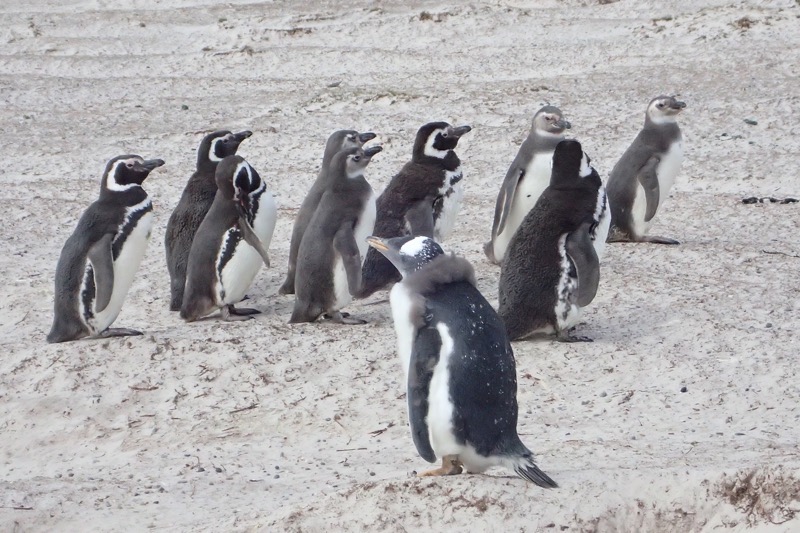 Generally two eggs will be laid in a burrow and, this may alarm some people, but these eggs have traditionally supplemented food for the Falkland Islanders. Hmmm… penguin eggs for breakfast anyone? Toni D tells us that they are no longer allowed to eat Magellanic penguin eggs, as their numbers are far from safe – however, they are still allowed to eat the eggs laid by Gentoo penguins. You are allowed to only take the first Gentoo egg laid in a nest. It turns out that actually encourages the penguin to lay another egg, as the penguins will always try to raise two eggs. Often times the first eggs have proven to be infertile anyway, so encouraging them to lay a second egg a little later in their breeding cycle see them end up with more breeding pairs raising two chicks instead of just one.
Generally two eggs will be laid in a burrow and, this may alarm some people, but these eggs have traditionally supplemented food for the Falkland Islanders. Hmmm… penguin eggs for breakfast anyone? Toni D tells us that they are no longer allowed to eat Magellanic penguin eggs, as their numbers are far from safe – however, they are still allowed to eat the eggs laid by Gentoo penguins. You are allowed to only take the first Gentoo egg laid in a nest. It turns out that actually encourages the penguin to lay another egg, as the penguins will always try to raise two eggs. Often times the first eggs have proven to be infertile anyway, so encouraging them to lay a second egg a little later in their breeding cycle see them end up with more breeding pairs raising two chicks instead of just one.
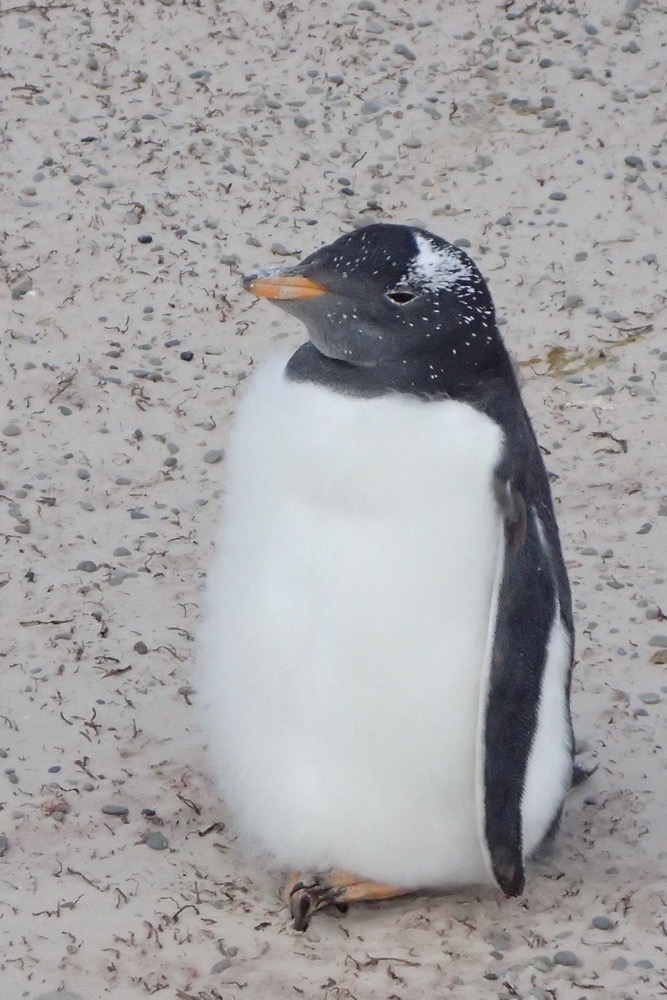
The eggs themselves sound a bit disconcerting to consume… when boiled, the ‘egg white’ is actually somewhat translucent, and the yolk can range from dark orange to deep red, which, according to Toni, leaves it looking more like an eyeball than a boiled egg! That would probably turn a lot of us off, though Toni assures us they make excellent omelettes, are also good for light and fluffy scrambled eggs, as well as being fantastic to make meringue – pavlova being a favourite in this part of the world too.
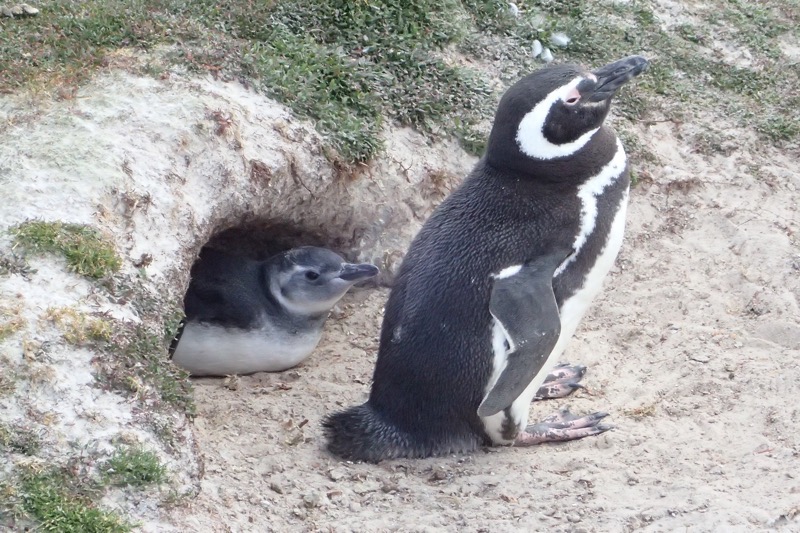
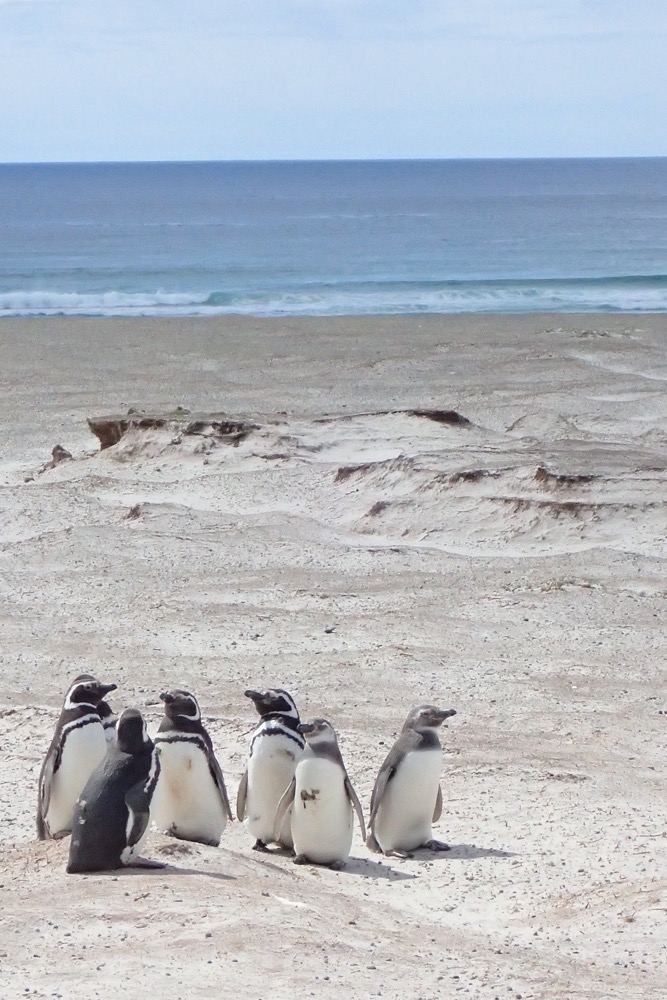 There are so many thousands of penguins here, and we were able to get very close without disturbing their natural activities.
There are so many thousands of penguins here, and we were able to get very close without disturbing their natural activities.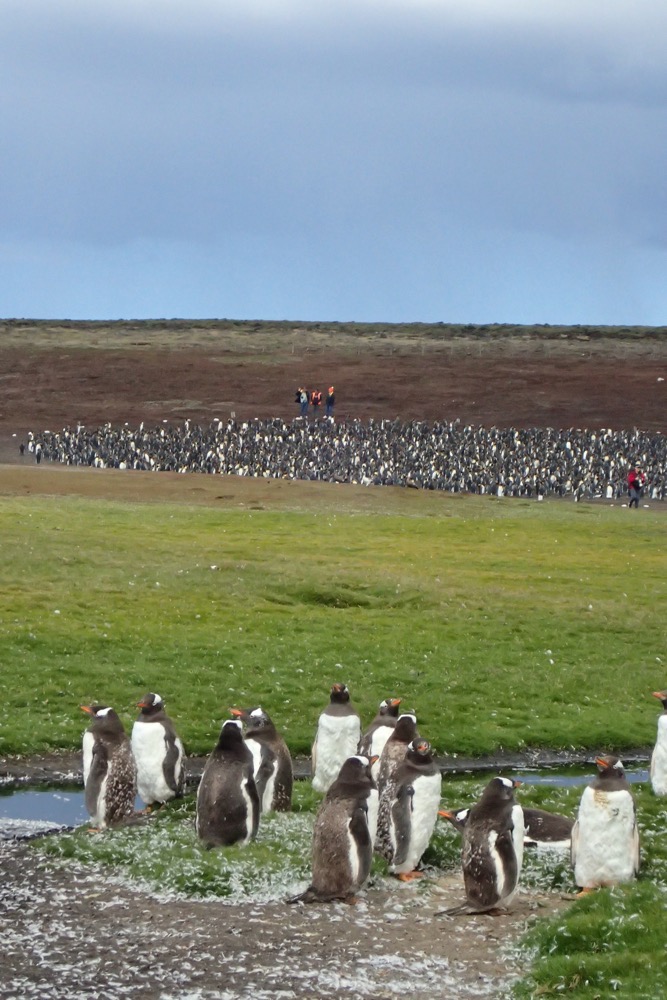
But the penguins everyone has come all this way to see are the beautiful and striking King Penguins, Aptenodytes patagonicus (cool name, huh?). I saw some of these once at the Edinburgh Zoo (back in 1995), and remember being struck at how tall, and how beautiful, they were back then. Today, the colony did not disappoint. The King Penguin is the second largest penguin in the world, and they breed on sub-Antarctic islands. The global population is estimated to be at around 2 million pairs and is thankfully slowly on the increase. The King penguins were in the Falklands long before people arrived in 1870, but many were killed for their oil and feathers. Their population has slowly been making a recovery since the 1960s, and are now on the increase in all their natural habitats. Volunteer Point is the most northernly and most accessible King penguin rookery in the world, and it has the largest group of King penguins in the Falkland islands with over 1,000 breeding adults, rearing 400-500 chicken each year. A recent aerial survey photograph has estimated that there were approximately 4,000 King penguins at the point today! Which is not difficult to believe. There were so many of them!
The King penguins were so interesting to watch. They are about 3ft tall and weigh about 10-15 kgs (that is 3 – 5 Dixies for reference 😉 ). They live to about 20 years of age and they are usually of breeding age at around 6 years old.
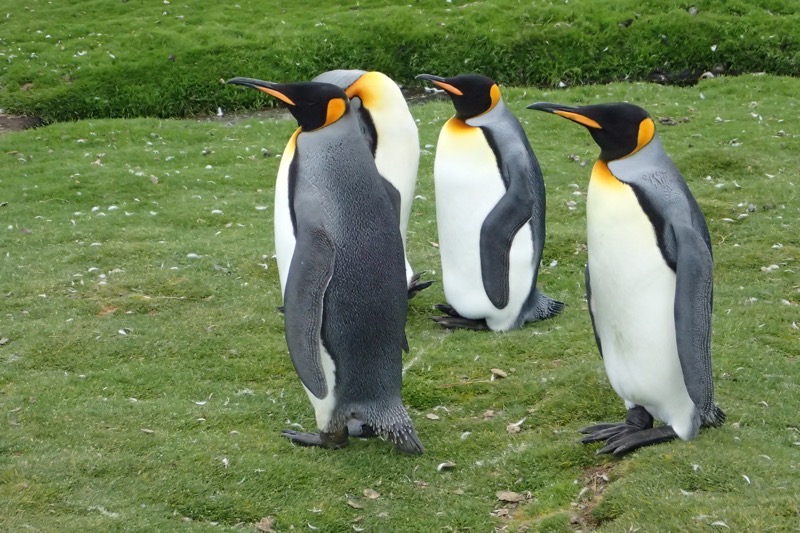
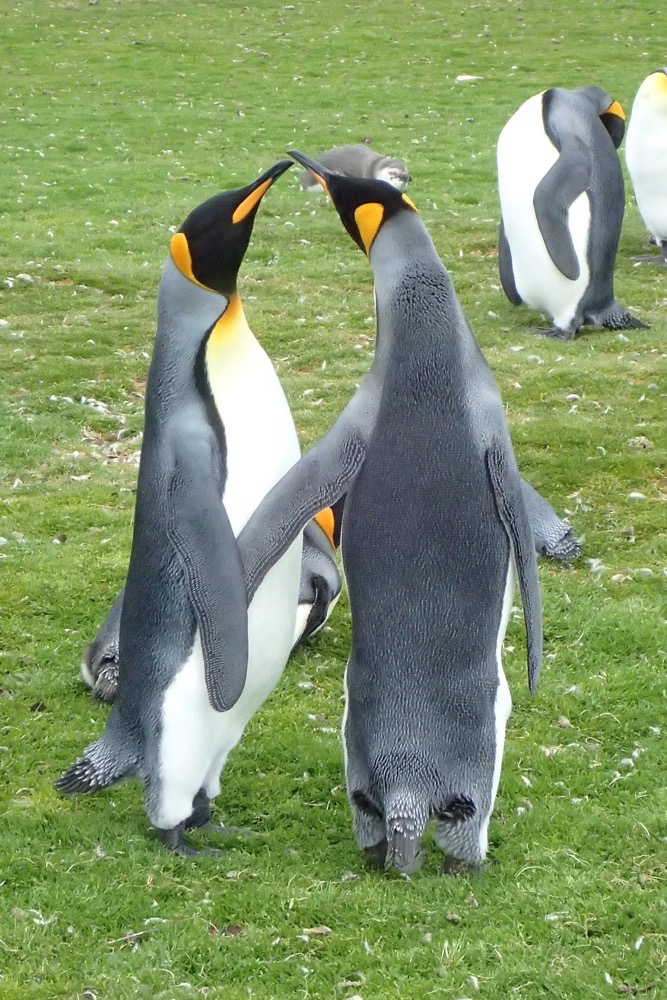
High pointing is part of the courtship display between male and female penguins. The two birds will face each other and lift their heads pointing upwards making themselves as tall as possible. I have no idea why they do this – but it must be some sort of ‘come hither’ sexy penguin behaviour. Not much chop if you’re a short arse penguin, I say. 😉
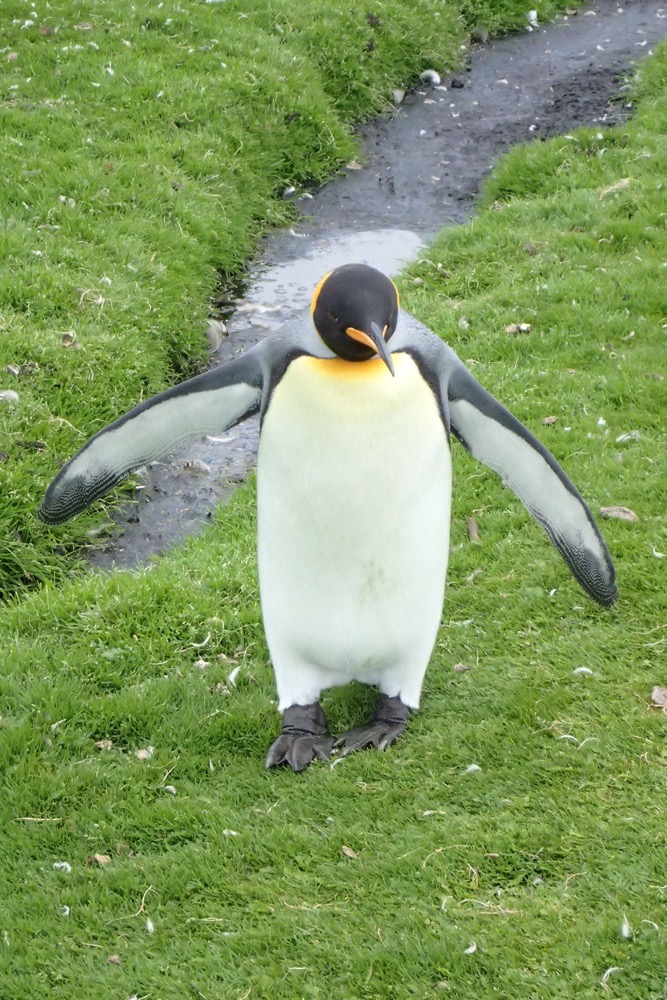
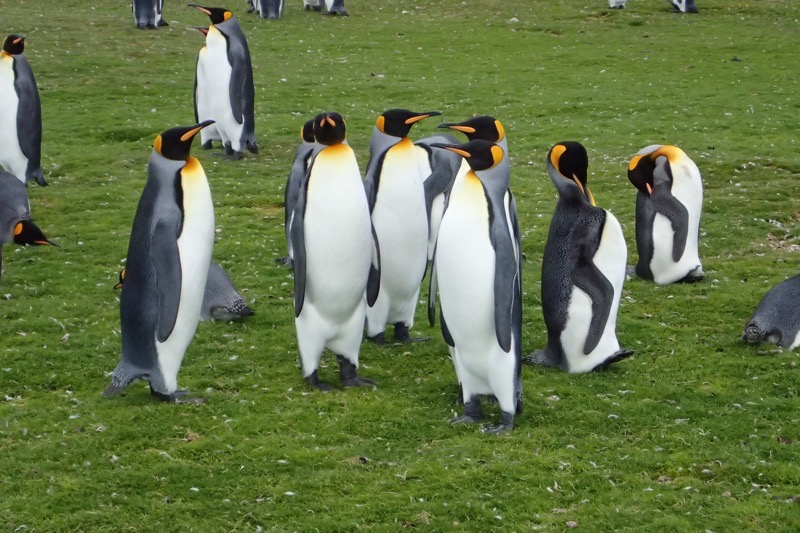
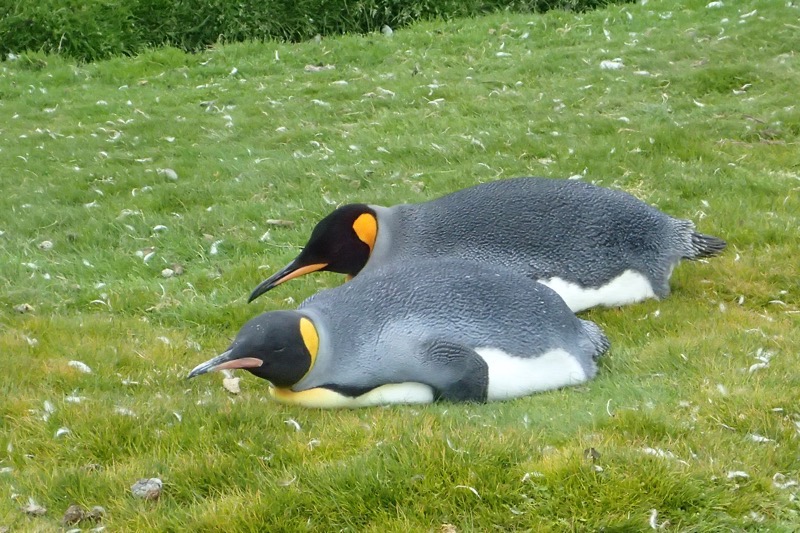 Penguins also do this weird horizontal head circling thing, which they tend to do while they are incubating their eggs and this makes them less mobile. If another bird gets to close, they adopt this threat posture where they throw their heads into the air as a waring that they may strike with their beaks.
Penguins also do this weird horizontal head circling thing, which they tend to do while they are incubating their eggs and this makes them less mobile. If another bird gets to close, they adopt this threat posture where they throw their heads into the air as a waring that they may strike with their beaks.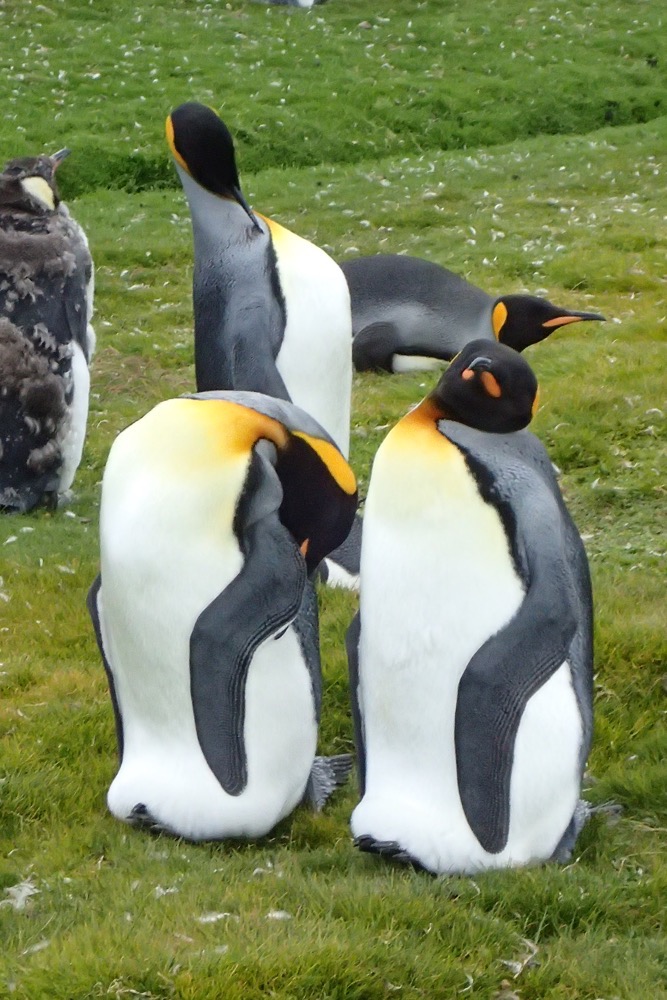
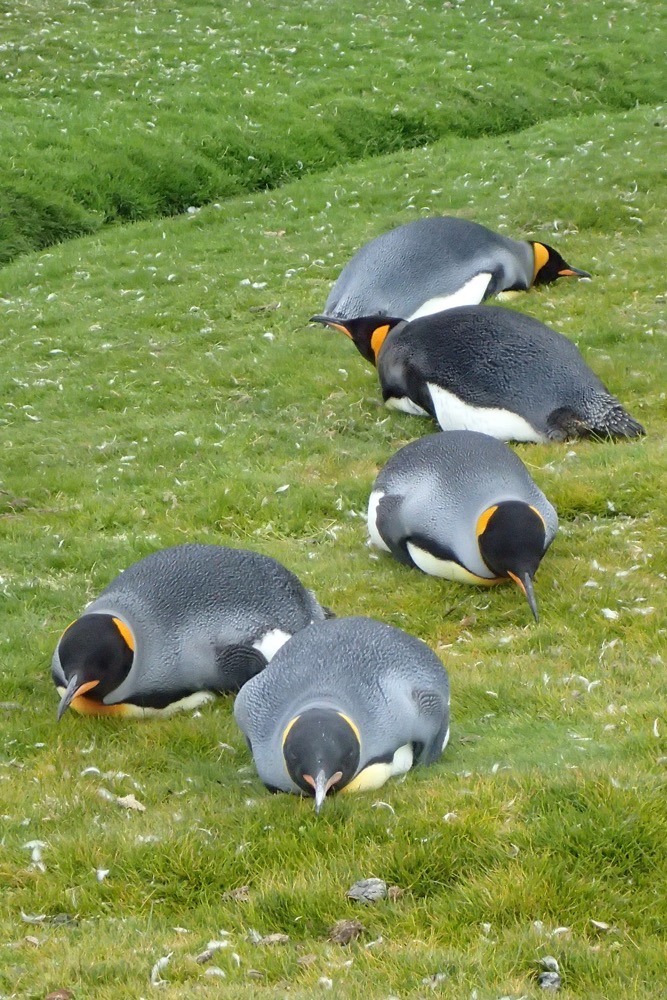
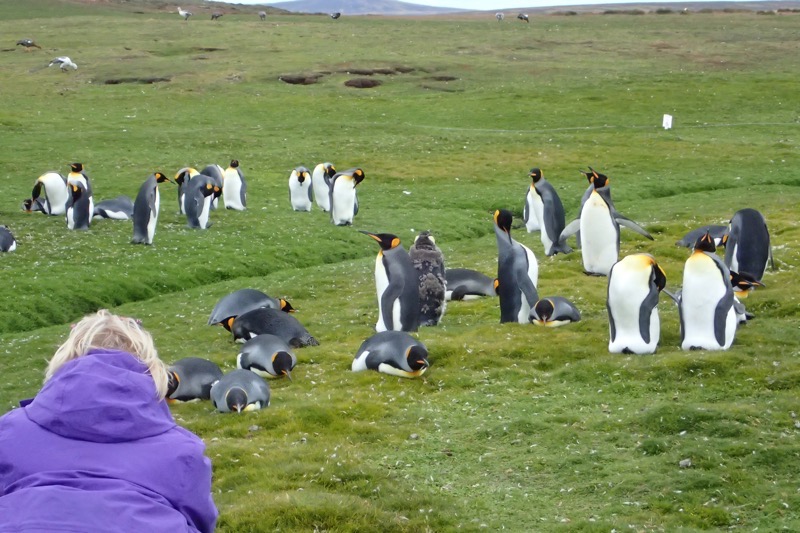
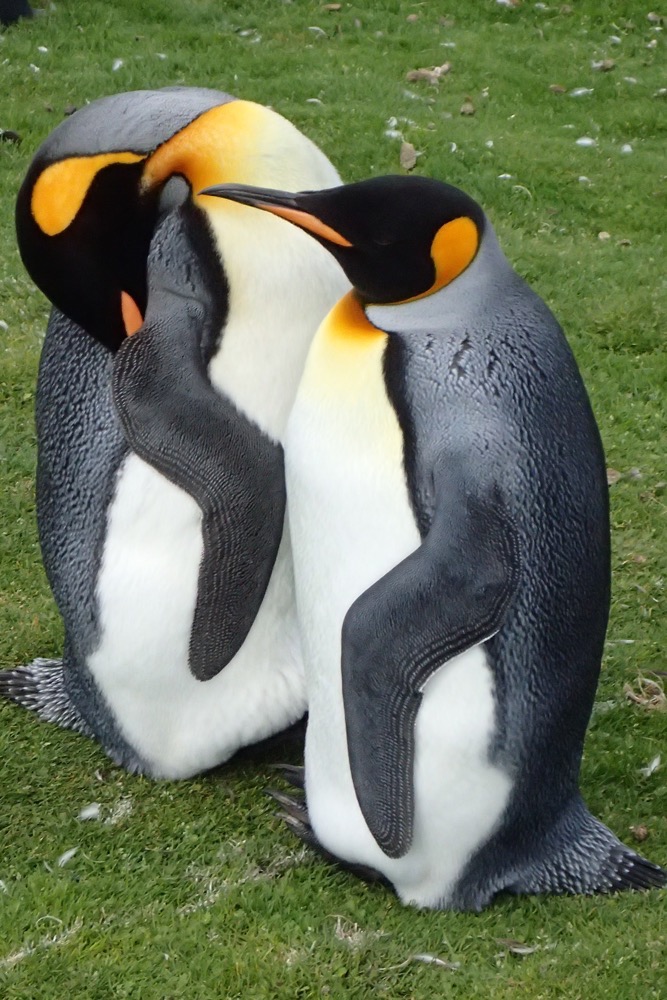 But the most fun behaviour to watch in the penguin was to just watch them walking. Flippers out for balance, and waddling from side to side as they shift their weight, they plod along, and you can almost hear them having strange little conversations: *penguin waddling about in a circle looking for something*… “Penny! Where’s my socks?!” 😉
But the most fun behaviour to watch in the penguin was to just watch them walking. Flippers out for balance, and waddling from side to side as they shift their weight, they plod along, and you can almost hear them having strange little conversations: *penguin waddling about in a circle looking for something*… “Penny! Where’s my socks?!” 😉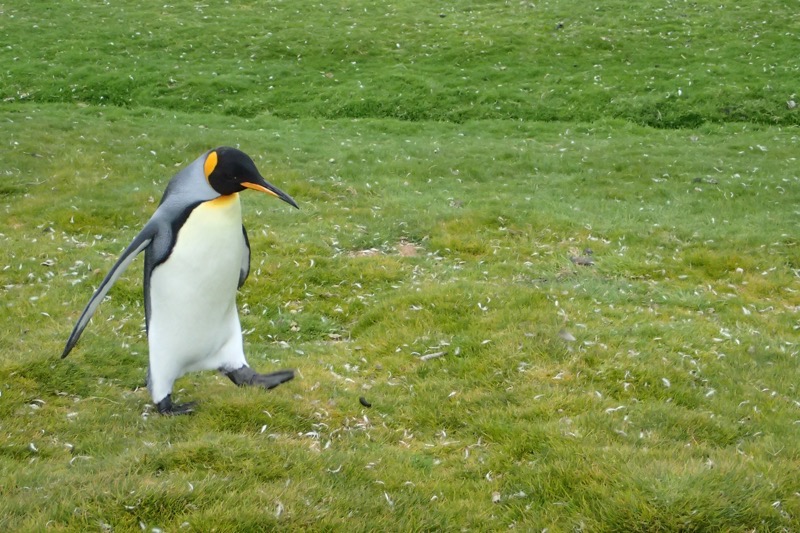
You could spend all day making up dialogue for penguins, waddling about like weird little grumpy old men.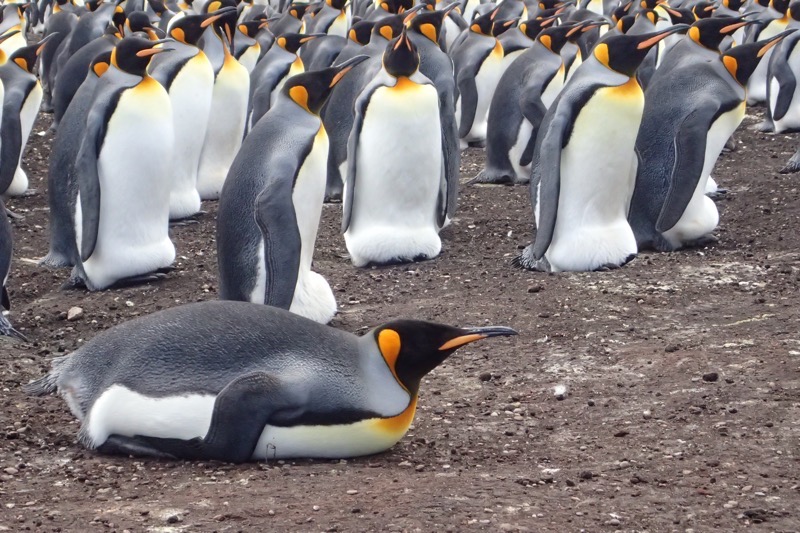
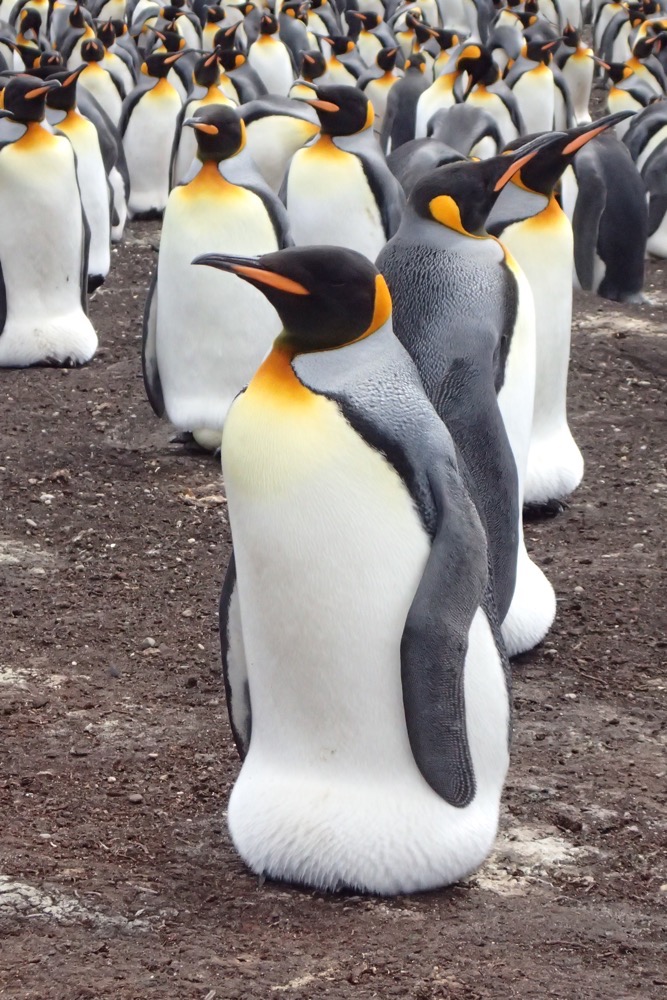
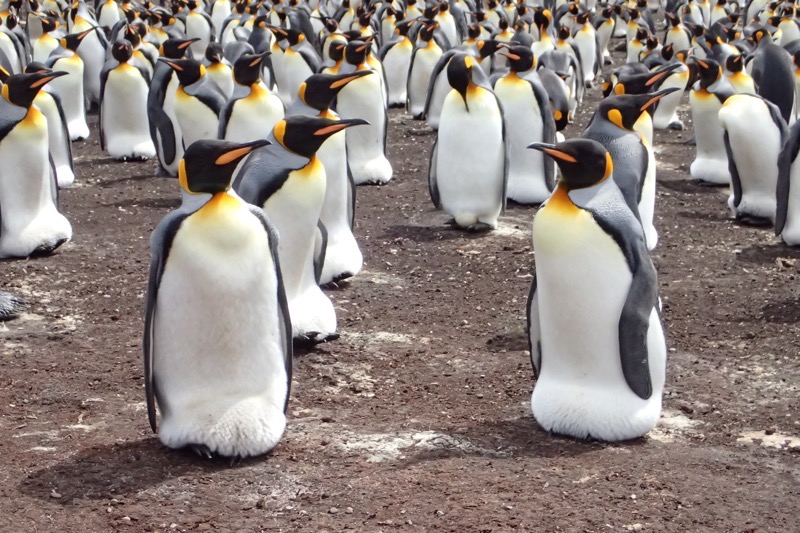
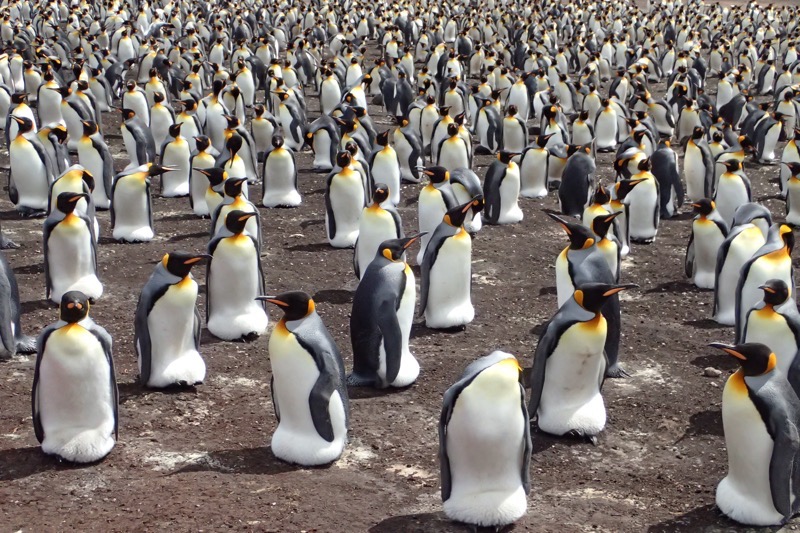
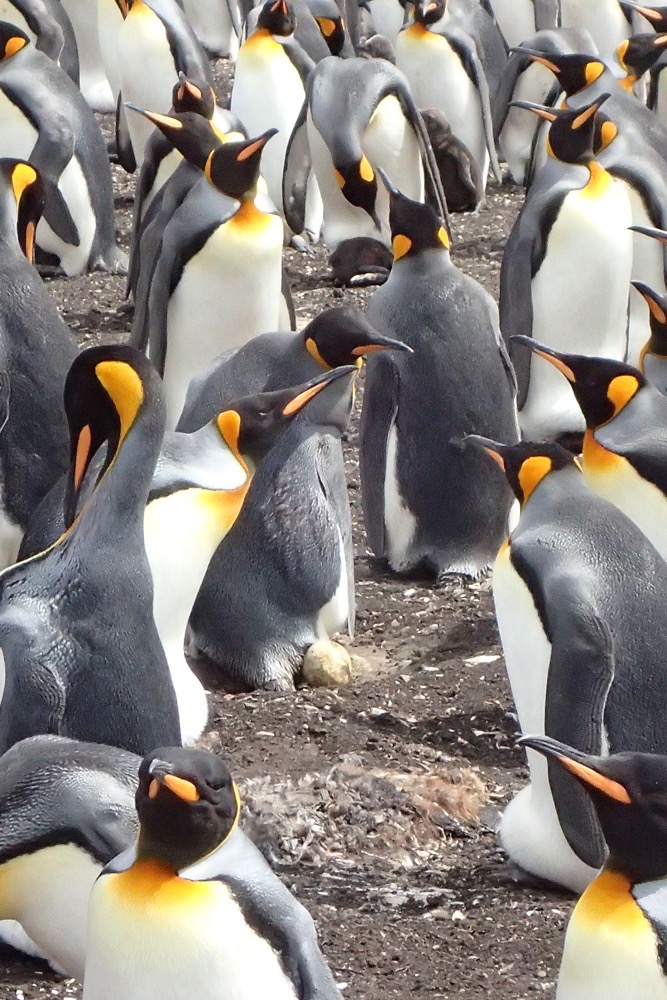
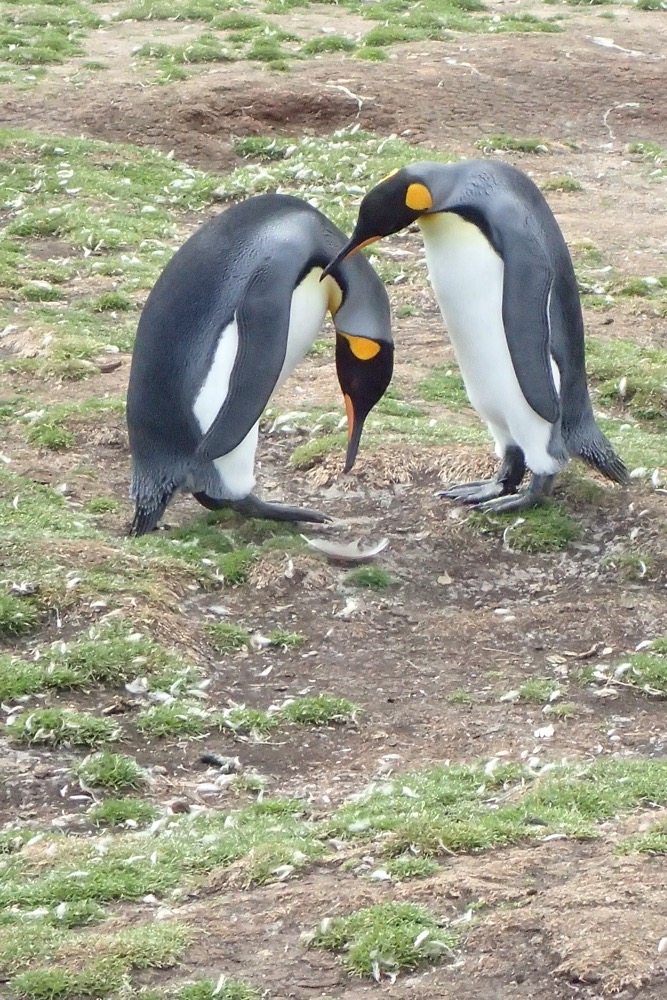 You can see the penguins preening their feathers, especially when they have just returned from sea. Penguins apparently, have a special preen glands that produces a waterproof oil and they rub this all over their feathers with their beaks. This oil is vital to helping the penguins stay warm and dry while at sea.
You can see the penguins preening their feathers, especially when they have just returned from sea. Penguins apparently, have a special preen glands that produces a waterproof oil and they rub this all over their feathers with their beaks. This oil is vital to helping the penguins stay warm and dry while at sea.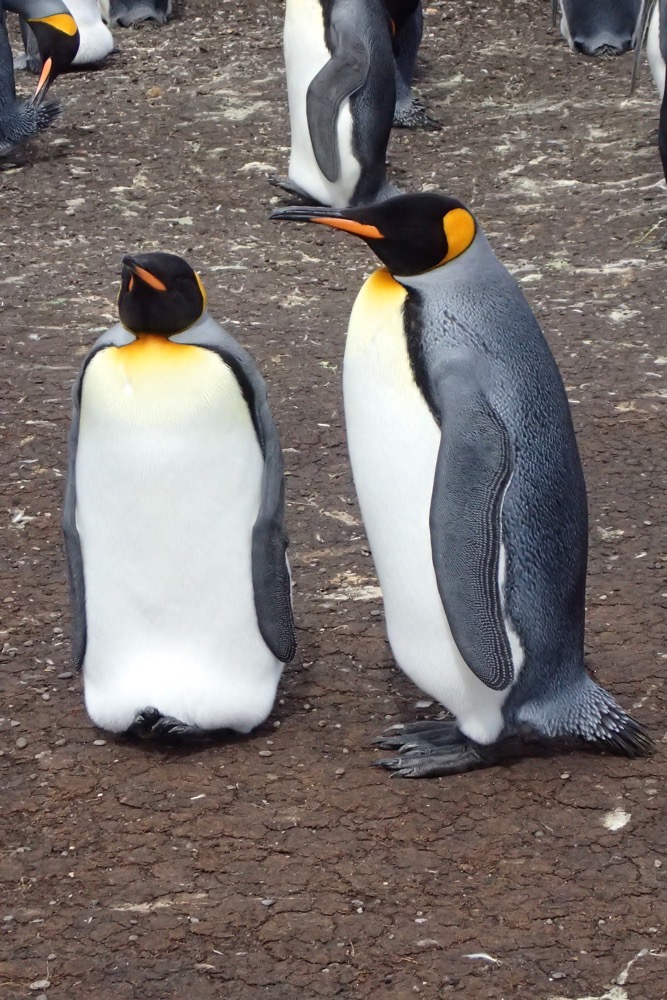
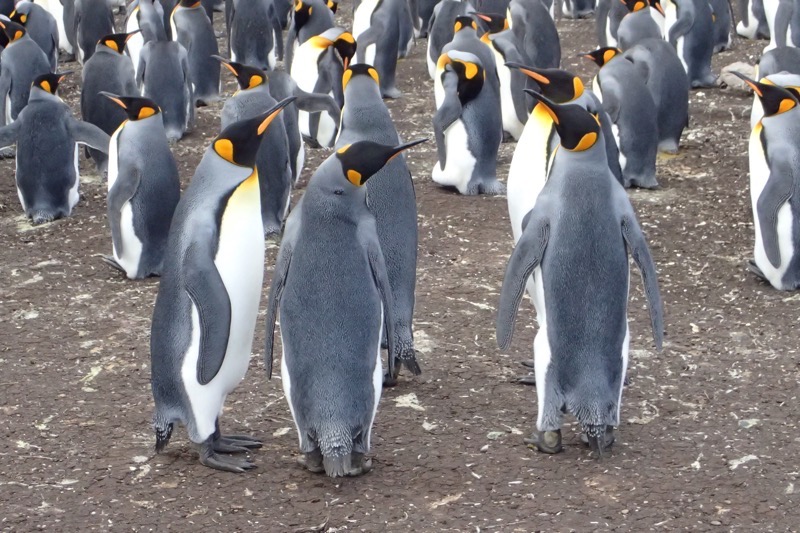 We often saw penguins having a bit of a squabble, flapping and fighting with each other. This behaviour is warning other birds during various stages of courtship and breeding. The males hit each other with their flippers, and even peck and bite at one another to ward others away.
We often saw penguins having a bit of a squabble, flapping and fighting with each other. This behaviour is warning other birds during various stages of courtship and breeding. The males hit each other with their flippers, and even peck and bite at one another to ward others away.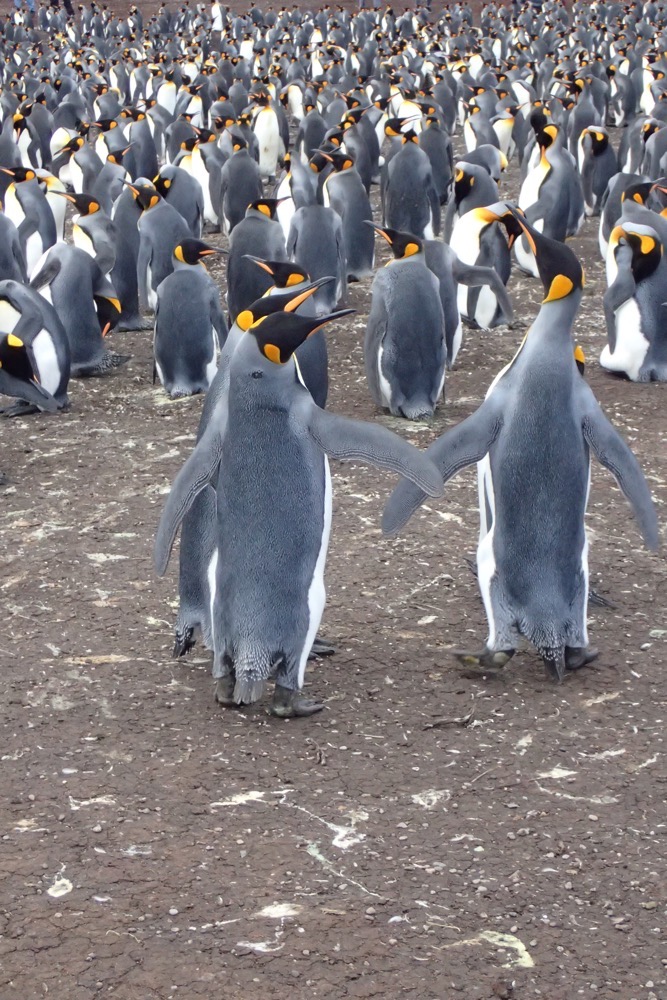 Something else we observed was a lot of ear preening and shoulder rubbing. This apparently means the penguins are getting uneasy or they are feeling threatened… sometimes if people were getting too close, they would start this sort of behaviour. I saw one man actually try and pet the penguins, and while I wish I had told him to wind his head in, I was also rather hoping he’d get bitten for his trouble. Thankfully he stopped before I got close enough to say something. What a knob.
Something else we observed was a lot of ear preening and shoulder rubbing. This apparently means the penguins are getting uneasy or they are feeling threatened… sometimes if people were getting too close, they would start this sort of behaviour. I saw one man actually try and pet the penguins, and while I wish I had told him to wind his head in, I was also rather hoping he’d get bitten for his trouble. Thankfully he stopped before I got close enough to say something. What a knob.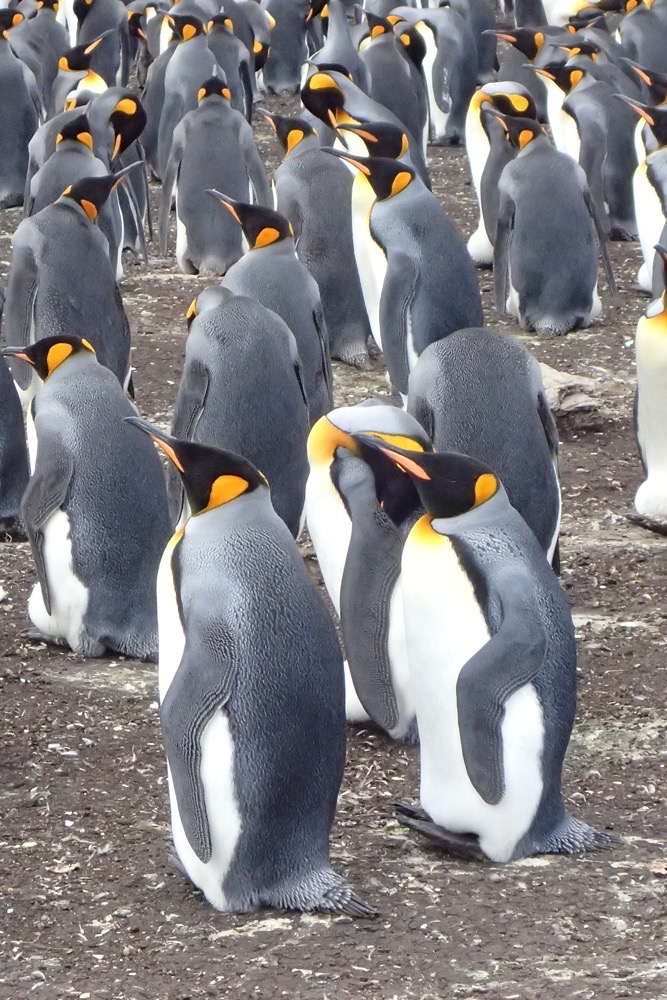 We also saw lots of trumpeting behaviour, which is commonly done by all the male penguins arriving at the colony. They do it to announce their presence and when bonding with a female. How unusual of the male of the species to rock on in and be all loud and stuff. 😛
We also saw lots of trumpeting behaviour, which is commonly done by all the male penguins arriving at the colony. They do it to announce their presence and when bonding with a female. How unusual of the male of the species to rock on in and be all loud and stuff. 😛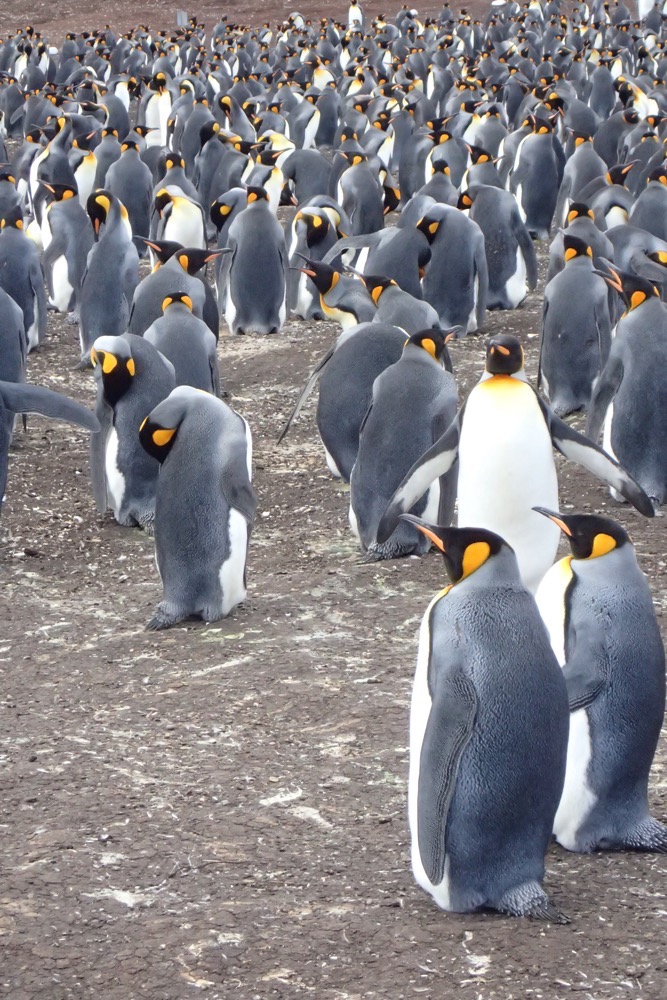
We had a spot of lunch – thankfully no penguin eggs – and it would soon be time to hit the road and head back to the ship. The weather was starting to close in around us, and there was a small storm heading off to the… I want to say ‘south of us’, but I could be wrong.. that rumbled a bit and send down some rain in the distance. The island turned moody very quickly and we found out the idiom in the Falklands isn’t ‘four seasons in one day’, it’s ‘four seasons in four hours’. As we drove back through increasingly moody Scottish highlands… err, I mean Falklands peat bogs, I had mental images of Kate Bush in *that* red dress running around in my head singing Wuthering Heights, which made the other ladies laugh when I shared the odd mental connection – but they all agreed it was entirely fitting.
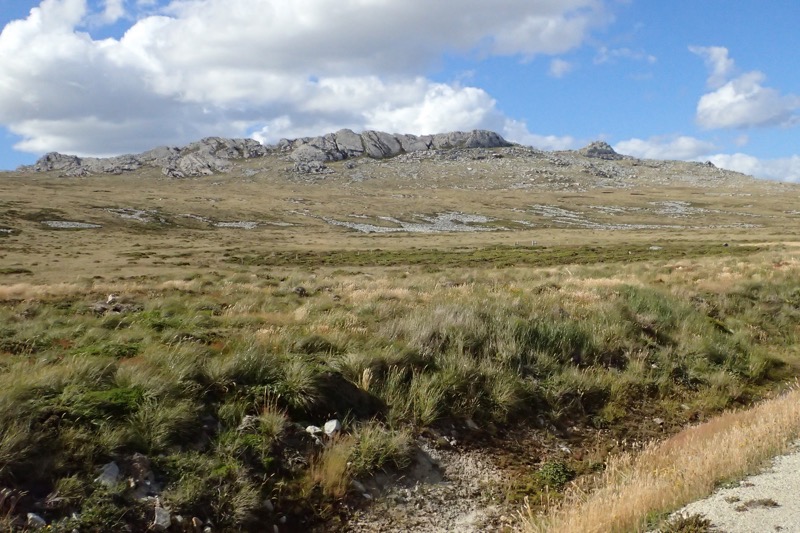
I did mention that if I was asked, I would say that the Falklands are full of rocks, peat, sheep, penguins and extraordinarily well-travelled sheep farmers! I have seen remote communities before, and many people who live in them, never ever leave their area of origin. Given their remote and isolated location, I was surprised by the fact that the Kelpers travel as much as they do – but it makes sense. If you are brought up knowing you will have to travel for serious health problems, or you will have to travel if you want to further your education, or you will have to travel to visit relatives… then you become travellers yourself. It’s just part of life for them. In this way, they are just like Aussies and Kiwis… everything is so far away, we know we will have to travel to see the world, and when we travel – we go and we stay gone as long as time, money and leave will allow. We don’t go to Europe for a week – we go and we stay a month. The Falklanders are just like this too.
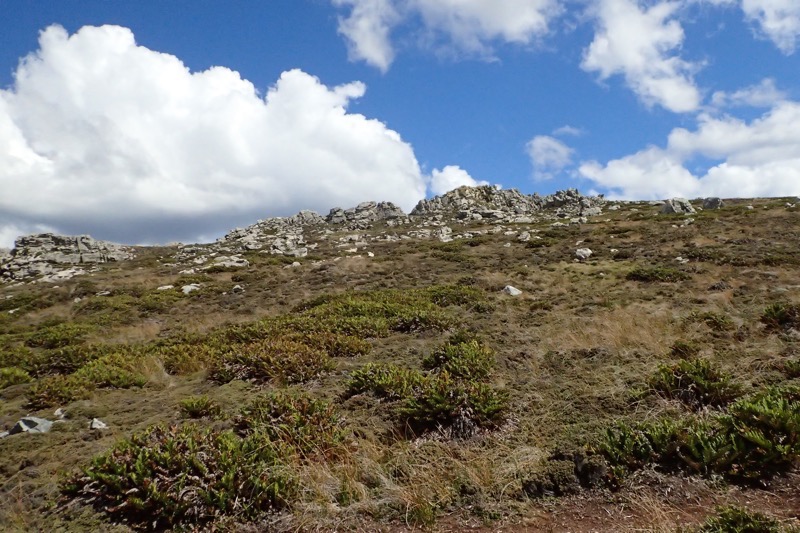
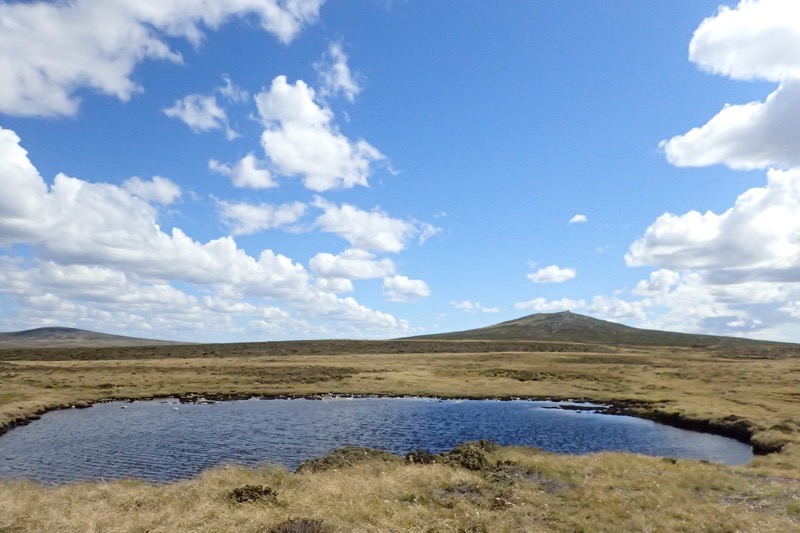
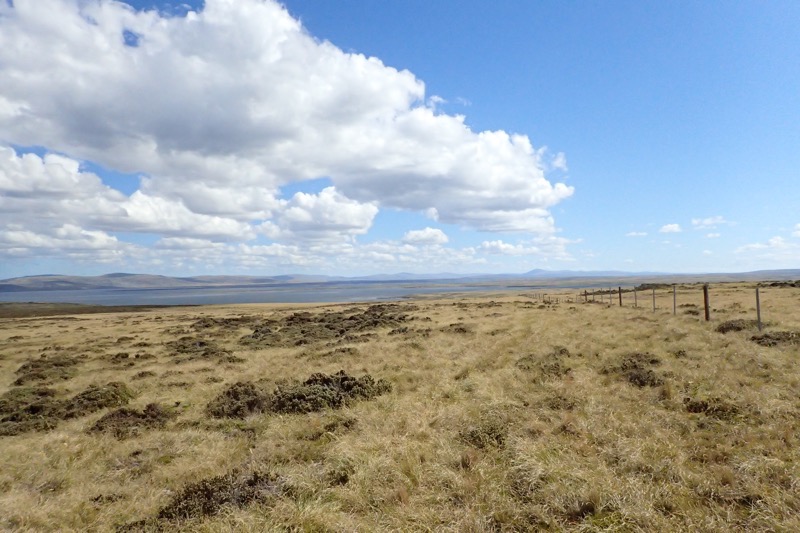 Our off road convoy driving over the peat… bouncing along. I’m sure paying for it today! Oi, my neck/back.
Our off road convoy driving over the peat… bouncing along. I’m sure paying for it today! Oi, my neck/back.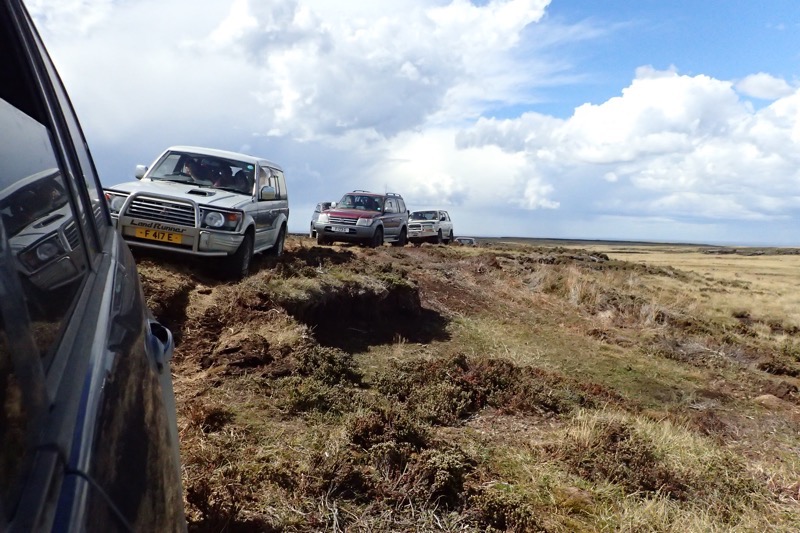
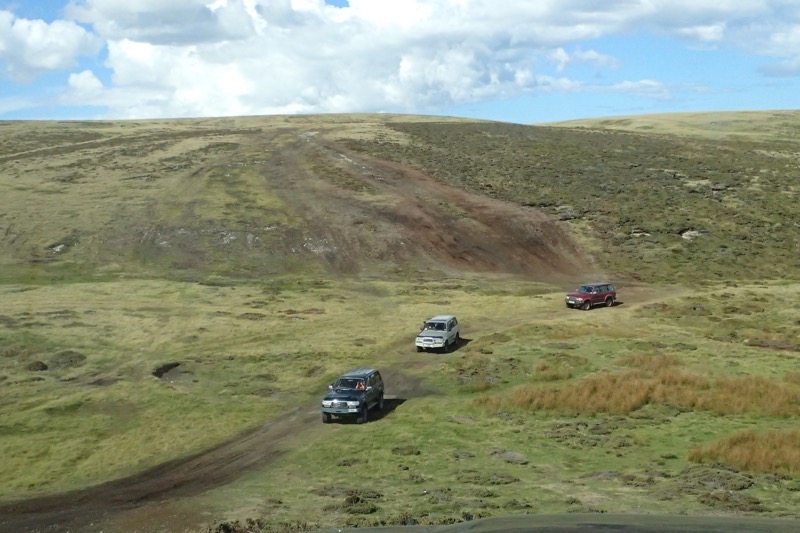
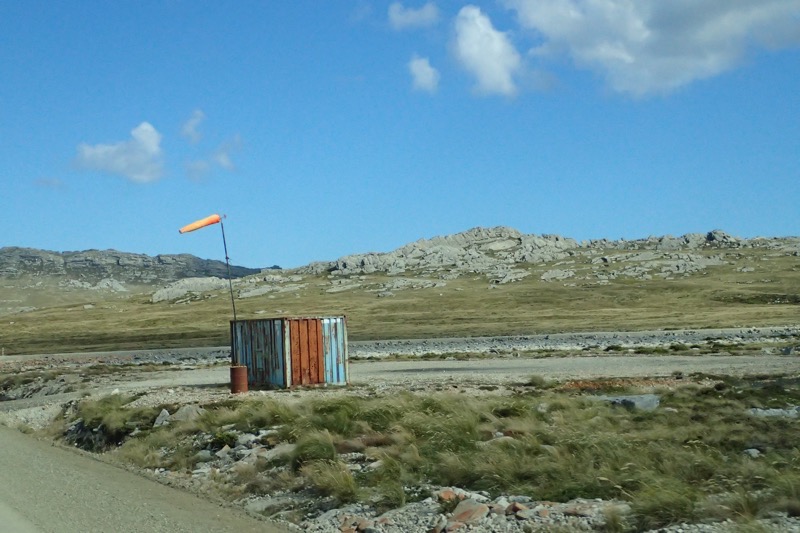 This is Boot Hill, I have included it here because I know how much the locals just LOVE this concept… can’t get enough of it! There are two stories of how this organic collection of ‘boots on spikes’ came into existence. One, involves military contractors leaving a boot behind when they leave the Island much like throwing a coin in the Trevi Fountain so that they might come back one day.
This is Boot Hill, I have included it here because I know how much the locals just LOVE this concept… can’t get enough of it! There are two stories of how this organic collection of ‘boots on spikes’ came into existence. One, involves military contractors leaving a boot behind when they leave the Island much like throwing a coin in the Trevi Fountain so that they might come back one day. 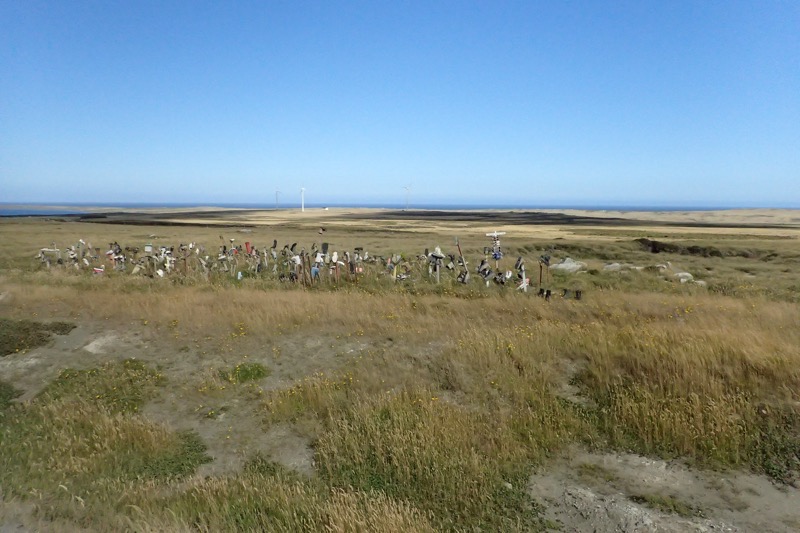 The other story involves some young louts who had gone and stolen something they shouldn’t have, and having ended up with white chalky marks on their shoes for their trouble which would give them away as the culprits. So they abandoned their shoes at this hill in order to attempt to avoid detection. Toni and Richard absolutely love telling their guests all about Boot Hill, and if you ever get the chance to do their 4WD tour, be sure to ask to stop and take a photo… they can’t get enough of that shit! 😉
The other story involves some young louts who had gone and stolen something they shouldn’t have, and having ended up with white chalky marks on their shoes for their trouble which would give them away as the culprits. So they abandoned their shoes at this hill in order to attempt to avoid detection. Toni and Richard absolutely love telling their guests all about Boot Hill, and if you ever get the chance to do their 4WD tour, be sure to ask to stop and take a photo… they can’t get enough of that shit! 😉 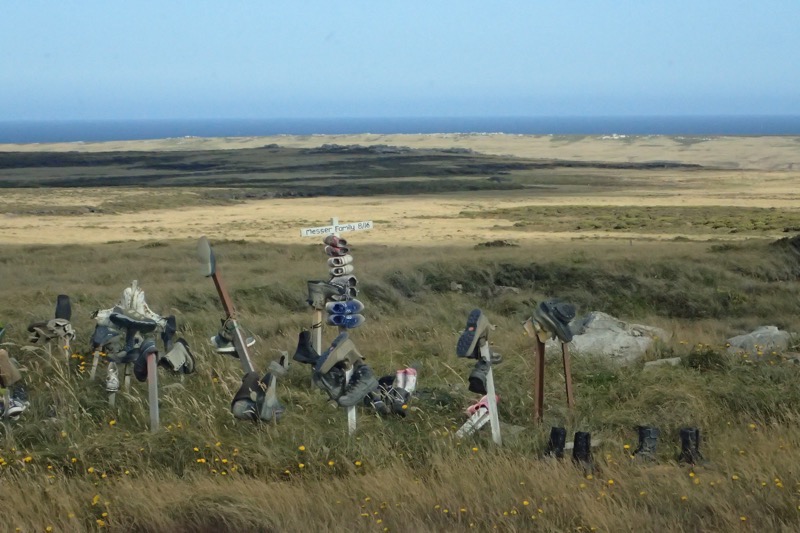
By the time we got back to town, we had talked about military contractors, bird species, first settlers, healthcare, higher education options, family weddings, local and international politics, climate change, child birth, taxes, travel, and lord knows what else in between!
We had a few moments to whip through town before heading back to the port and we got a feel for the lovely town of Stanley. We saw the Governor’s House – the Governor being appointed by Her Majesty, Queen Elizabeth II… as a side note, at dinner after our Stanley visit, one of our dining companions was hitch hiking across the island, and was picked up by none other than the Governor of the Falkland Islands himself. They had a good old chin wag and he dropped them across the island! The Governor sounds like a dude, picking up hitch hikers in what is presumably a government vehicle! 🙂
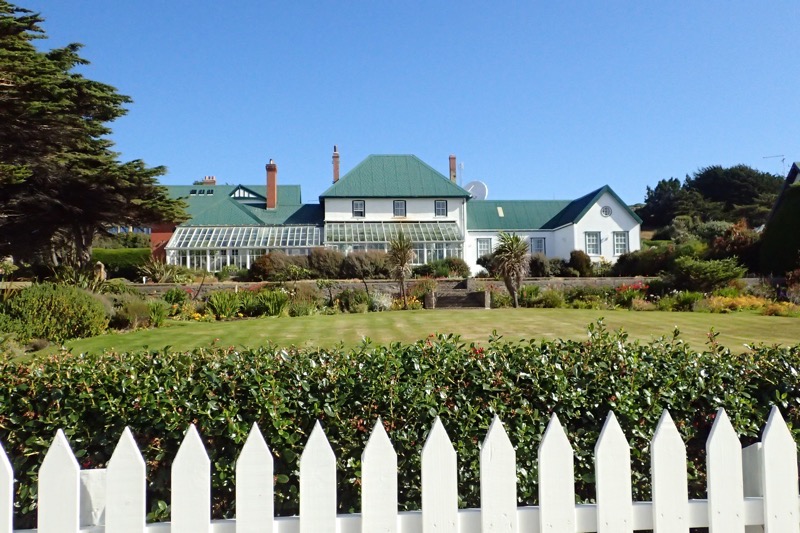 The town of Stanley was historically a place where ships would port for repairs and supplies before and or after rounding the Horn. Many ships that were deemed irreparable were either cannibalised here, used as storage, or like this one, left to its own devices until it rots away. Toni did tell us the name of this ship – but, my memory has let me down on that one.
The town of Stanley was historically a place where ships would port for repairs and supplies before and or after rounding the Horn. Many ships that were deemed irreparable were either cannibalised here, used as storage, or like this one, left to its own devices until it rots away. Toni did tell us the name of this ship – but, my memory has let me down on that one.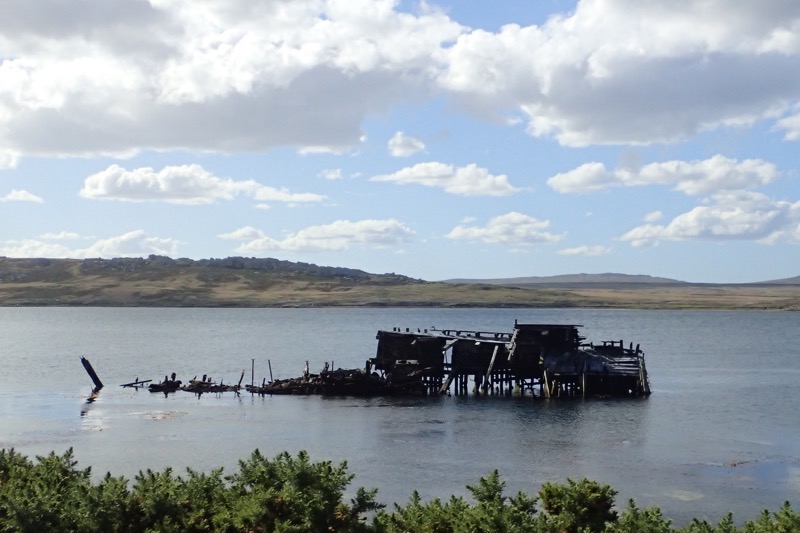 This is the local Catholic church, very pretty, and very small town England look about it.
This is the local Catholic church, very pretty, and very small town England look about it.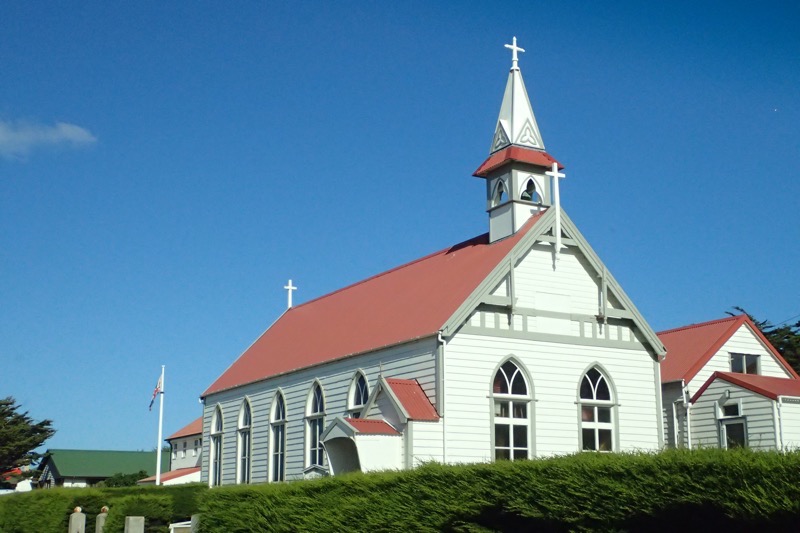 And of course the CoE church, which is somewhat more substantial. The archway you see to the right of the church is made our of Blue Whale jawbones… I’m not sure how I feel about that. I mean, yes, whaling is a bit part of our global collective history, and there is no point removing the arched monument and attempting to whitewash this period of global expansion and discovery, but I look at something like this and it just makes me sad for those beautiful gentle creatures.
And of course the CoE church, which is somewhat more substantial. The archway you see to the right of the church is made our of Blue Whale jawbones… I’m not sure how I feel about that. I mean, yes, whaling is a bit part of our global collective history, and there is no point removing the arched monument and attempting to whitewash this period of global expansion and discovery, but I look at something like this and it just makes me sad for those beautiful gentle creatures.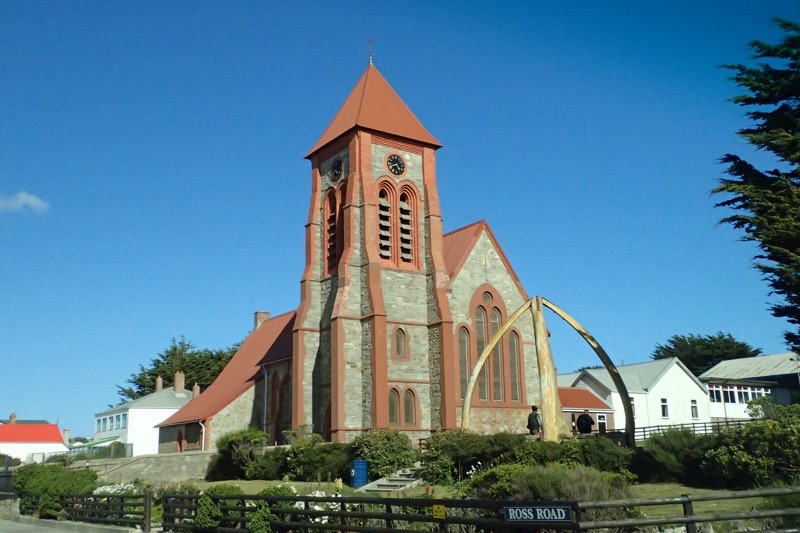
After this, it was back to the ship – and zomg, I was so exhausted. What a big day, and what a simply amazing day out! I have to send out a huge thanks to Toni for doing such a fantastic job of sharing her passion for the Falkland Islands with us. We were very impressed with the gorgeous countryside and the beautiful and quirky penguins, but I think the biggest impression was left on us by Toni herself. She shared her extensive knowledge of the Falklands, her enthusiastic community spirit, and her deep love of her remote island home, and I can not thank her enough.
Toni D, if by any chance you happen to find yourself reading this one day, and you’re planning a trip to Brisbane, Australia – just message me here; I would love the opportunity to show you around my home… we may even be able to hook you up with a Harley Davidson tour around Byron Bay. Thanks for everything. <3
Verdict: 10 out of 10, One of the best days ever! Can’t recommend the Falklands highly enough, I would totally go again! 🙂

Absolutely love your photos of the penguins! We are so used to seeing penguins photographed surrounded by ice or snow, lovely to see them in their summer environment.